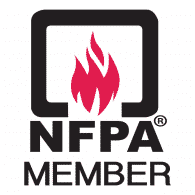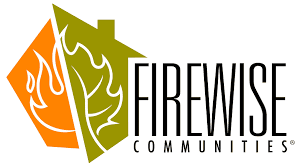If you’re like most people, the thought of a fire starting on your stove makes you reflexively reach for water to put it out. There are countless videos of homeowners attempting to stop fires with their garden hoses (and sometimes getting hurt in the process). This is one reason why sprinkler systems for homes in Wildfire prone areas have become so popular in recent years— it seems to make logical sense. These systems are even being recommended by many insurance companies in an effort to curb the impact of these increasingly common disasters. Are these systems the cure to the problem?
Unfortunately, not only are these devices more expensive and disruptive to install than other wildfire precautions you can take, they also don’t have a lot of evidence that they work. How do these systems work?
Wildfire sprinkler systems are general sprinkler systems attached to the roofs to be deployed on an emergency wildfire event when property owners are evacuated. There is a flaw to the system as you have seen many videos of property owners trying to hose down their property before leaving and still having no significant effect if a wildfire’s radiant heat can not be extinguished by firehose with significantly more water pressure.
These systems are generally very expensive in the ranges of $50,000-100,000 to install, so you will want to make sure the property have a high likelihood of surviving. The truth is, the likelihood of a home surviving a catastrophic wildfire will be the same regardless of the sprinkler system. The property will be engulfed by the sheer heat and force of the wildfire, instantly evaporating any moisture in its way. Imagine a water gun taking out a house fire. The key is in prevention and not suppression. Moreover, unless you also install a dedicated water supply of some sort, your water will be shut off by the time the wildfire gets to you anyway.
With a smaller investment in home hardening solutions such as fire-resistant materials, ember-resistant vents, ember resistant gutter guards and vegetation management, your home will have a higher likelihood of survival with significantly less money invested.
A combination of home hardening solutions, application of long-term fire retardant and reduction of fuel through vegetation management is the key to reducing wildfire risks at your property. Our team of experts can conduct a risk assessment to ensure your property is held at the highest standard from CALFire and the NFPA.

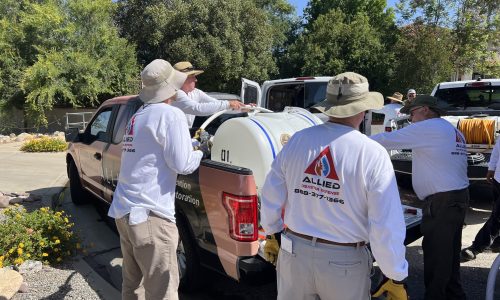
We assess the defensible space, combustibles around a home (home ignition zone), fences, decks, building shape, walls, roofs, roof vents, eaves & overhangs.
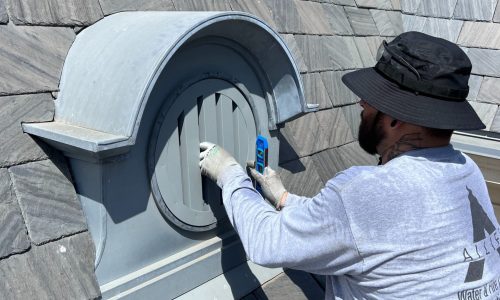
Home hardening solutions such as ember gutter guards, fire-resistant vents and double pane window glass prevents your home from catching fire through embers slipping through to the interior of the home.
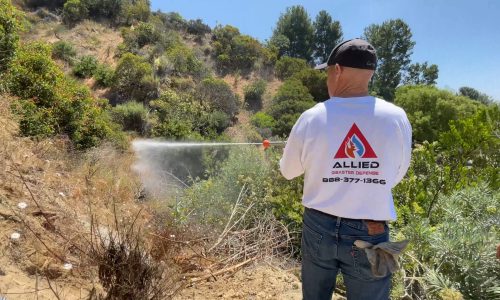
We utilize the same Fire Retardants used to fight wildfires as the ones dropped in the Fire Department’s airplanes (without the red dye). This gold standard fire retardant is safe and effective to apply to vegetation.
The Long Term Fire Retardant (LTR) will last throughout the rain season but generally half an inch of heavy rain is the standard of our retardant. This will need to be reapplied regularly for optimal use.
Yes! The LTR is actually a fertilizer and safe to use around vegetation.
Depending on your property, generally we want to spray the first 0-30 feet (the intermediate zone) of your home. With larger properties with a lot of vegetation, we recommend vegetation management and additional application of fire retardants up to 100 feet of the property.
Yes! The LTR is non-hazardous and poses no risk to humans, vegetation or animals/pets.
We spray within the first 5 feet of the home onto any vegetation that may pose a threat. The home itself should be built with fire resistant material and other home hardening solutions like ember proof vent guards and gutter guards. We conduct a home risk assessment to provide you with the best plan of action all around.
We recommend drip hoses or drip lines to water the roots without washing off the retardants.
Defensible space is a buffer between your home and the vegetation that surrounds it. This helps to slow or stop the spread of wildfire and provides firefighters a safe area to defend your home.
Flying embers from a wildfire can destroy homes up to a mile away. Home hardening is the process of protecting openings and using ember-resistant materials such as fire-resistant vents, gutter guards and double pane window glass to increase the likelihood of survival when wildfire strikes.
The pink dye is for the fire fighting teams to see and locate which areas have fire retardants applied. If it was clear, the fire team will have a hard time distinguishing which areas have fire retardants applied.
You can call us with the number on this website or fill out any form. Our team will then reach out to confirm a day and time our fire experts can conduct a risk assessment at your property.
